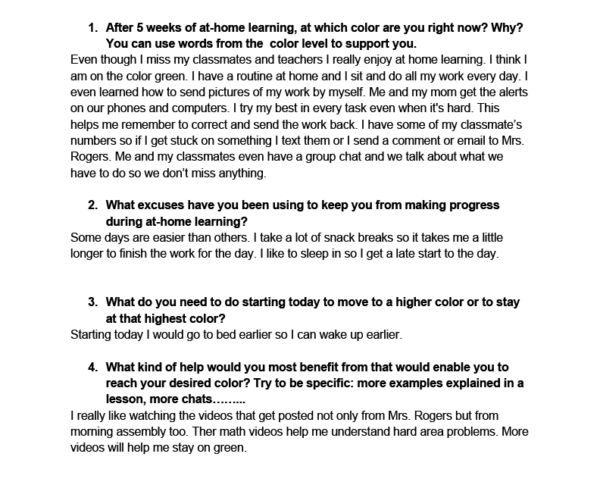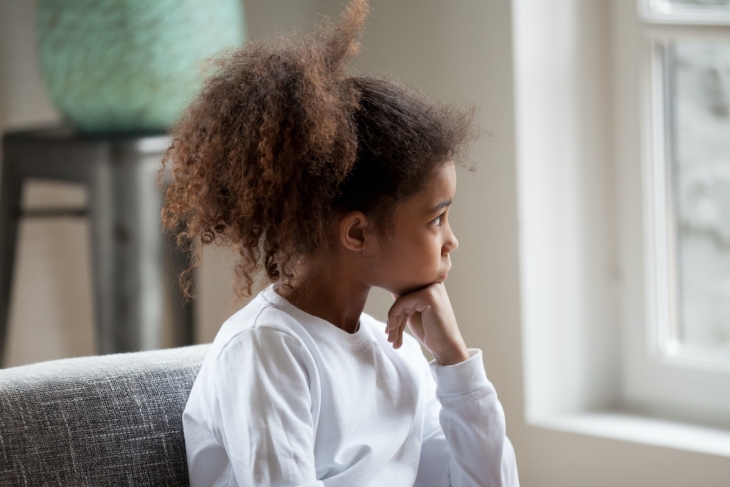Editor’s note: This blog post was first published by Partnership Schools.
Two weeks ago, Principal Jessica Aybar from St. Athanasius School in the South Bronx sent students a Loom video on a day she declared “Self-Reflection Friday.” As you can see on the brief video, she kicks off the reflection with this explanation: “We want to stop and ask ourselves: Where are we right now? How are we doing right now? Because once we know how we are doing right now, we can make a plan for how we could be doing even better.”
In these unprecedented days of learning at home, it is easy to become overwhelmed—which isn’t helpful for our students, their families, or the learning that can and must continue. As CASEL—the Collaborative for Academic, Social and Emotional Learning—notes, “One of the most valuable sources of information about what is or isn’t working will come from students, families, and your wider community of stakeholders.” And that’s where Jess Aybar’s self-reflection comes in.
Inviting students to cultivate self-awareness, self-management, and responsible decision-making is something that happens every day when students are at St. Athanasius. So it’s no surprise that, even during distance learning, the leadership and faculty at the school are seeking to cultivate these skills—which some suggest are crucial for students’ academic achievement and long-term life outcomes.
Here’s the four-minute video in which Jessica asks students to do a stoplight analysis on their distance learning habits—identifying the factors by which they can determine if they are on green, yellow, orange, or red:
As you can see in the video, a student who is on “green”—effectively approaching their learning each day—can say:
- I submit my work regularly.
- I show effort on my assignments.
- I read and apply my teacher’s feedback.
- I reach out to parents/teachers/peers if I get stuck.
It may seem simple, but naming these four habits can help anchor a child who feels like they are adrift, or a parent who may be grappling to figure out what distance learning behaviors are essential and which ones not to sweat; note Ms. Aybar says nothing about getting out of pajamas by noon. Later, she also names other less productive habits that may be useful for students and parents to consider—for example, she notes that students who are on yellow don’t always use the materials teachers provide. Again, simple—but not always easy for any of us, even adults, to develop habits of performing regularly.
Students were invited to email their self-reflections, identifying the color they think they are on and why. This self-reflection can be tremendously helpful to teachers as they seek to determine why a student might be struggling and how best to help. Here are just a couple examples of student responses:
From a seventh grader, whom many of us can relate to:
Out of all the four choices, I would say I fit best under yellow. I would say yellow because I try my best to apply all the work my teachers put in but sometimes my work is not my best. I do submit and do my work at the appropriate time, but sometimes it’s not as neat as it should be. I have days when I am not in a good mood and I tend to do a half job on my work, but I also have days where I am motivated and put lots of effort into my assignments. Every day I try my best to put as much effort as possible into my work.
And from a sixth grader:
I feel like I’m in yellow because I do turn in my work, but I don’t always check my work and don’t always read the teacher’s comments and respond to them, and sometimes my work is all over the place. I can improve and go to green by using everything that I’m given to help me with my work in the future.
Many parents of younger students seem to have embraced the opportunity to have conversation with their children using the frame that Jessica provided, and to report the outcomes, as did the parent emailing a message on behalf of their second grader: “I like the videos you send.... They help me learn. I think home learning is pretty difficult because I am not used to it. I also have a routine to keep me comfortable through all this. I think I am ready for third grade.”
For students who are used to functioning always under the watchful, nudging eyes of teachers, both exercising these four habits independently and achieving a level of self-awareness about whether they are or are not doing so constitute giant leaps in metacognition. And simply asking students to reflect on these habits can make their usefulness more apparent to students.
It’s hard to overstate the usefulness of even simple tools like this in these days of distance learning.
In addition, the habits Ms. Aybar and her team explicitly and implicitly cultivate will be useful long after distance learning ends. More immediately, children who make progress in developing these habits now may be better equipped to surmount the lingering effects of knowledge and skill development gaps in years to come.
Here’s an example of a fifth grader, demonstrating and reflecting on habits that will be useful long after fifth grade. It’s so thoughtful, we’ve reproduced it here in its entirety:

To be sure, particularly for those who struggle, telling students that they need to have these habits and forming them in these habits are not the same. So St. Athanasius is analyzing these reflections, checking in on students daily, monitoring how much work gets handed in and how well students complete it, and providing both written and oral feedback.
We are keenly aware of students and families who seem to be “checking out” of distance learning. Yet even as we rightly prioritize how to help those students, we cannot lose sight of—or fail to support even more creatively—the thousands of students, families, and educators like these, in all kinds of neighborhoods across the country, who are figuring out what is needed to rise to this occasion, and rising a little bit higher each day.


